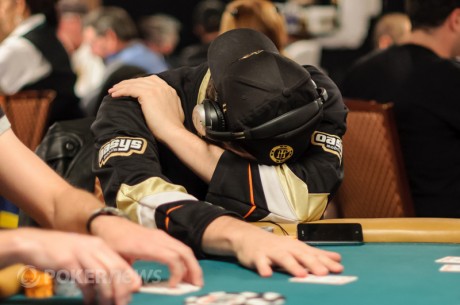The Poker Shrink, Vol. 56: The Just-noticeable Difference

There is a concept in psychology called the Difference Threshold, which is commonly referred to as the ��just-noticeable difference��. Technically, psychologists define these as a change in any form of stimulation that a person will notice at least fifty percent of the time. For example, you are asked to hold a cup that has water in it. You close your eyes and as more water is added (without any sound), you say when you notice an increase in weight. Obviously, the weight of a single drop of water will not be noticed, but filling the cup half full will at some point trigger the difference threshold.
The just-noticeable difference can be used to measure the increase in any stimulus: light, sound, weight, heat, cold�� and even poker tells.
It might be obvious that if someone is giving off a subtle tell �� perhaps a nervous twitch �� that the bigger or more frequent the tell, the more likely it is to be read by an opponent. On the other hand, the more attentive you are to subtle clues and tells the more likely you are to pick them up, while the other players at the table might miss them. These are good examples of the just-noticeable difference.
Here is an example I was shown by a professional poker player. He told me to watch a certain player at his table. Whenever that player made a big bet, he would sit back in his chair. The further back he sat the more confident he was in his hand. If he sat fully forward leaning towards the table, he was bluffing. Mid-way meant he was on a draw with some outs. All the way back in his chair and he held a monster. It had taken the pro a couple of hours to get this information and correctly assign the right read. He was operating by observing a just-noticeable difference in the player��s posture.
Later, another player showed me a difference aspect of this idea. He told me that when he was last to act in a hand on the river, he always took advantage of the situation to send a message to the other players at the table. First, he made his decision on the hand in play. Once he knew what his play would be, he took advantage of being last to act (��being on stage�� he called it). He would send a message to everyone at the table. For instance, he was going to fold what he was sure was a second-best hand. But before he folded he talked about the hand in such a way that he appeared to be struggling with the decision to fold. In this way he was trying to discourage players from bluffing him, by making it appear that he was having a hard time laying down a hand.
Here is what he told me: ��You almost never are putting on the act for the player who is in the hand with you, they are already paying attention. You are talking or acting to get the other players to pay attention and pick up the read you are trying to give. You gotta talk just enough to get them interested but not too much that they pick up on the fact that you are delivering a message.��
In other words, you are trying to get the players to ��just notice�� your poker play �� just enough to get the message but not enough to notice that the message comes gift-wrapped with a bow and is probably ticking like a well-planted time bomb. The just-noticeable difference works many ways, but the more subtle the ��just noticeable�� is, the more you��ll benefit from the information given or received.
Are you looking for a PokerStars.com marketing or bonus code? - You've come to the right place, get in the action with PokerNews.com





